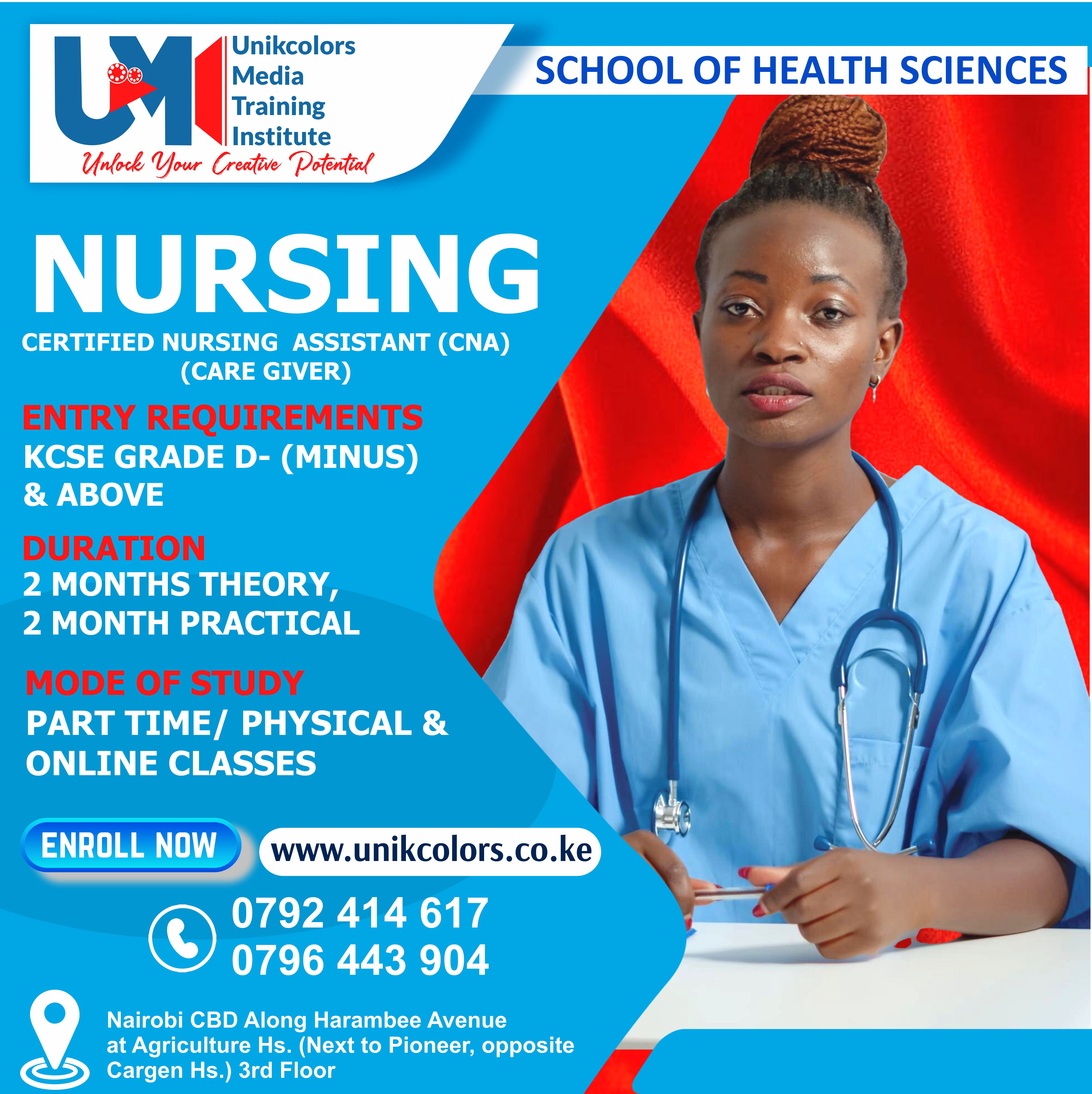CERTIFIED NURSING ASSISTANT - CARE GIVER COURSE

Title: CERTIFIED NURSING ASSISTANT - CARE GIVER COURSE
6 Common Certified Nursing Assistant Program Courses
Aspiring Certified Nursing Assistants (CNAs) take a series of courses during their training. These courses equip them with the skills and knowledge needed to work effectively in healthcare settings. In this blog post, we'll provide an overview of the six courses included in a CNA program.
1. Introduction to Healthcare
This course is designed to provide an overview of the healthcare industry, including the roles and responsibilities of healthcare professionals, the healthcare system, and healthcare policies and regulations. This course typically covers a wide range of topics, including:
- History and evolution of healthcare systems
- Healthcare policies and regulations
- Roles and responsibilities of healthcare professionals
- Healthcare ethics and patient rights
- Healthcare financing and insurance
- Healthcare disparities and access to care
- Infection control and disease prevention in healthcare settings
- Healthcare technology and its impact on patient care
- Cultural competence in healthcare
- Legal issues in healthcare
- Healthcare management and administration
- Quality improvement in healthcare
- Healthcare research and evidence-based practice
- Interdisciplinary teamwork and collaboration in healthcare
- Communication skills in healthcare
- Professionalism in healthcare
- Healthcare advocacy and activism
By covering these topics, this course provides students with a broad understanding of the healthcare industry, its various components, and the factors that influence the delivery of care.
2. Anatomy and Physiology
In this course, students learn about the structure and function of the human body. Students will learn about the different organs, tissues, and organ systems, and how they work together to maintain homeostasis. This course covers a range of topics, including:
- Introduction to Anatomy and Physiology
- Cell structure and function
- Tissue types and functions
- Skeletal system
- Muscular system
- Nervous system
- Cardiovascular system
- Respiratory system
- Digestive system
- Urinary system
- Endocrine system
- Reproductive system
- Integumentary system
- Immune system
By understanding the structure and function of the human body, CNAs can better recognize the signs and symptoms of disease or injury and provide more effective care to their patients.
3. Basic Nursing Skills
This course covers essential nursing skills, such as infection control, vital signs measurement, and patient hygiene. Students will also learn about the importance of patient communication and how to provide emotional support to patients and their families. Topics covered in this course may include:
- Vital signs assessment (temperature, pulse, respiratory rate, blood pressure, oxygen saturation)
- Bathing and hygiene
- Dressing and grooming
- Mobility and transfer techniques
- Positioning and turning patients
- Assisting with range-of-motion exercises
- Infection control and prevention
- Assisting with feeding and hydration
- Assisting with elimination (toileting, catheter care, bowel care)
- Recognizing and reporting changes in patient condition
- Providing emotional support to patients and their families
By mastering these basic nursing skills, CNAs can provide compassionate and competent care to their patients, while ensuring their safety and well-being.
4. Medical Terminology
Medical terminology is the language used in healthcare to describe medical conditions, treatments, and procedures. In this course, students will learn how to use medical terminology correctly and confidently, which is crucial for effective communication with healthcare professionals and patients. Topics covered in this course may include:
- Prefixes, suffixes, and root words
- Medical abbreviations and acronyms
- Anatomy and physiology terminology
- Common medical conditions and their terminology
- Diagnostic and treatment procedures and terminology
- Pharmacology and medication terminology
- Laboratory and diagnostic tests and their terminology
By learning about medical terminology, CNAs can effectively communicate with other members of the healthcare team, understand medical terminology used in patient care plans and instructions, and accurately document patient information.
5. Patient Care Skills
This course builds upon the basic nursing skills course, focusing on advanced patient care skills such as feeding and nutrition, mobility, and wound care. Students will also learn about the use of medical equipment and how to assist patients with activities of daily living. Topics covered in this course may include:
- Personal care skills, such as bathing, grooming, and toileting
- Mobility assistance, such as helping patients with transfers and ambulation
- Positioning and turning patients to prevent pressure ulcers
- Assisting with feeding and hydration
- Monitoring vital signs and reporting any changes to the healthcare team
- Recognizing and responding to signs of pain or discomfort in patients
- Supporting patients emotionally and providing comfort measures
- Responding to emergency situations and providing basic first aid
- Working effectively with other members of the healthcare team
These skills are essential for CNAs to provide holistic care to patients, addressing their physical, emotional, and social needs. Additionally, strong patient care skills are highly valued by employers in the healthcare industry, making them an essential component of any CNA program.
6. Clinical Practice
The clinical practice course provides students with hands-on experience working with patients in a real-world setting. Students will work under the supervision of a licensed nurse or physician and will apply the knowledge and skills they have learned in the classroom.
During clinical practice, students may perform a range of tasks and responsibilities, such as:
- Assisting with patient hygiene and grooming
- Measuring vital signs and recording them in patient charts
- Assisting with ambulation and transfers
- Assisting with feeding and hydration
- Observing and reporting any changes in a patient's condition
- Responding to patient requests and needs
- Performing basic wound care
- Assisting with basic medical procedures, such as catheterization or administering medications
- Communicating effectively with patients and healthcare team members
These tasks and responsibilities are designed to provide students with a broad range of experiences in patient care and enable them to develop the necessary skills and knowledge to succeed as a CNA.
Conclusion
In conclusion, a CNA program typically consists of six courses that cover a wide range of topics, from healthcare policies and regulations to patient care skills and medical terminology. By completing these courses, aspiring CNAs can gain the knowledge and skills they need to work effectively in healthcare settings and provide high-quality care to their patients.
